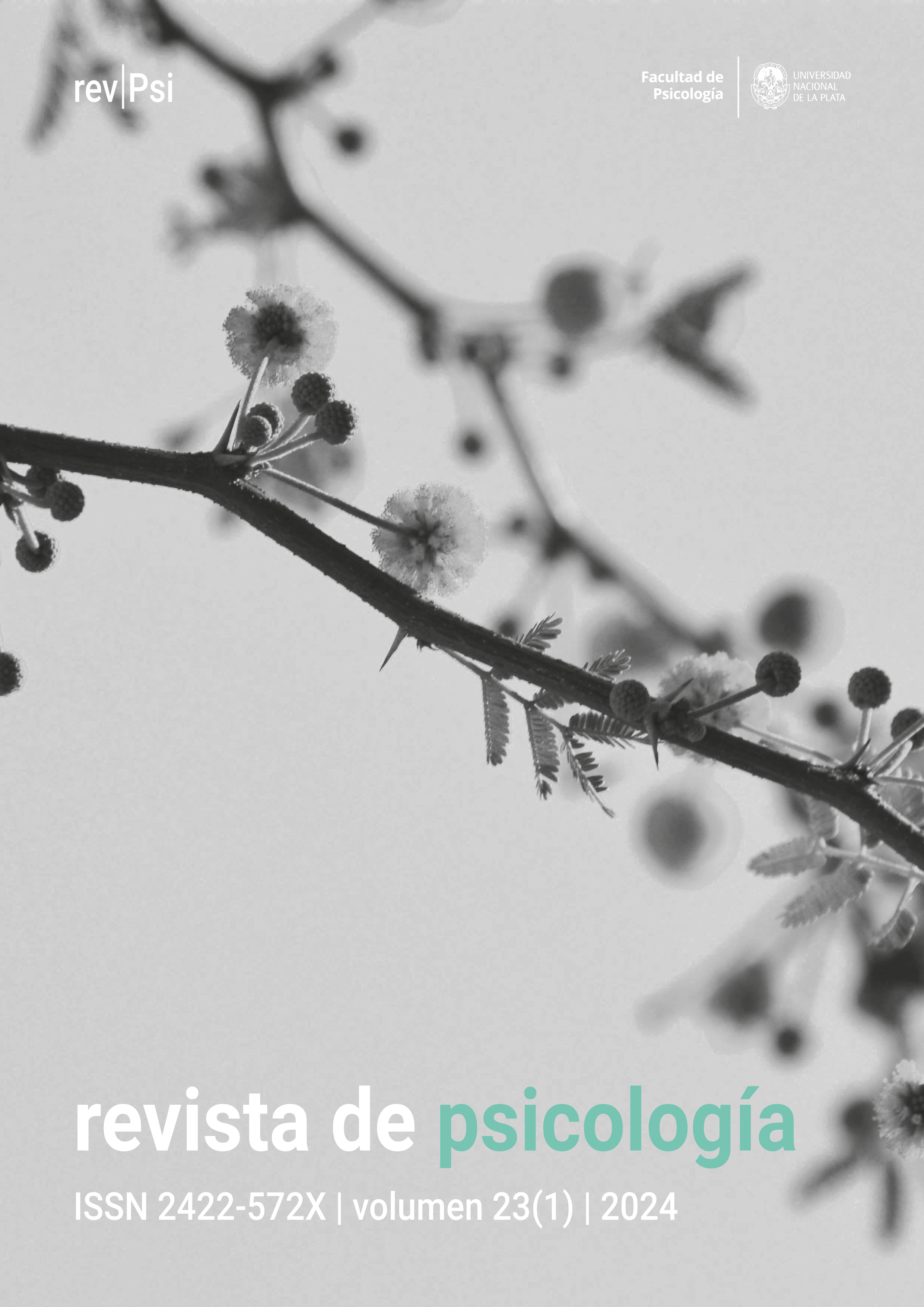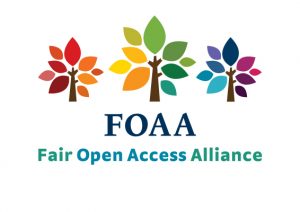Creatividad, improvisación y entrenamiento musical: una revisión sistemática
DOI:
https://doi.org/10.24215/2422572Xe151Palabras clave:
creatividad, entrenamiento musical, impsovisación, músicos, plasticidad cerebralResumen
La creatividad puede definirse como la interacción entre aptitudes, procesos y ambiente para generar productos novedosos y útiles. El entrenamiento e improvisación musical están asociados a cambios cerebrales y funcionales, y podrían influir en las capacidades creativas. El objetivo del presente estudio es realizar una revisión bibliográfica cualitativa descriptiva para evaluar si existe una diferencia en creatividad entre músicos y no músicos, y entre músicos que improvisan y músicos que no, y establecer, a partir de ello, una relación entre creatividad e improvisación musical. La búsqueda arrojó 11 estudios: 7 evaluaron las diferencias en creatividad entre músicos y no músicos, hallándose diferencias principalmente en creatividad musical, pero no en creatividad general; y 4 compararon músicos que improvisan y que no, y la mayoría halló diferencias en creatividad. Los resultados sugieren que la práctica musical y la improvisación inciden sobre la creatividad. La improvisación favorecería la plasticidad y desarrollo de funciones ejecutivas, que están relacionadas con el desempeño creativo.
Referencias
Assinnato, M. V. (2013). El concepto de mente en teorías sobre improvisación musical. Arte e Investigación, 15.
Aziz-Zadeh, L., Liew, S-L. y Dandekar, F. (2013). Exploring the neural correlates of visual creativity. Social Cognitive and Affective Neuroscience, 8(4), 475-480. https://doi.org/10.1093/scan/nss021
Barnett, S. M. y Ceci, S. J. (2002). When and where do we apply what we learn?: A taxonomy for far transfer. Psychological Bulletin, 128(4), 612-637. https://doi.org/10.1037/0033-2909.128.4.612
Barrett, K. C., Ashley, R., Strait, D. L. y Kraus, N. (2013). Art and science: How musical training shapes the brain. Frontiers in Psychology, 4, 713. https://doi.org/10.3389/fpsyg.2013.00713
Beaty, R. E. (2015). The neuroscience of musical improvisation. Neuroscience & Biobehavioral Reviews, 51, 108–117. https://doi.org/10.1016/j.neubiorev.2015.01.004
Benedek, M., Borovnjak, B., Neubauer, A. C. y Kruse-Weber, S. (2014). Creativity and personality in classical, jazz and folk musicians. Personality and Individual Differences, 63, 117–121. https://doi.org/10.1016/j.paid.2014.01.064
Bermudez, P., Lerch, J. P., Evans, A. C. y Zatorre, R. J. (2009). Neuroanatomical correlates of musicianship as revealed by cortical thickness and voxel-based morphometry. Cerebral Cortex, 19(7), 1583-1596. https://doi.org/10.1093/cercor/bhn196
Biasutti, M. (2015). Pedagogical applications of cognitive research on musical improvisation. Frontiers in Psychology, 6, 614. https://doi.org/10.3389/fpsyg.2015.00614
Burton, A., Morton, N. y Abbess, S. (1989). Mode of processing and hemisphere differences in the judgment of musical stimuli. British Journal of Psychology, 80(2), 169-180. https://doi.org/10.1111/j.2044-8295.1989.tb02311.x
Charyton, C. y Snelbecker, G. E. (2007). General, artistic and scientific creativity attributes of Engineering and Music students. Creativity Research Journal, 19(2-3), 213-225. https://doi.org/10.1080/10400410701397271
De Aquino, M. P. B., Verdejo-Román, J., Pérez-García, M. y Pérez-García, P. (2019). Different role of the supplementary motor area and the insula between musicians and non-musicians in a controlled musical creativity task. Scientific Reports, 9, 13006. https://doi.org/10.1038/s41598-019-49405-5
De Dreu, C. K. W., Nijstad, B. A., Baas, M., Wolsink, I. y Roskes, M. (2012). Working memory benefits creative insight, musical improvisation, and original ideation through maintained task-focused attention. Personality and Social Psychology Bulletin, 38(5), 656-669. https://doi.org/10.1177/0146167211435795
Diaz Abrahan, V. y Justel, N. (2019). Creatividad. Una revisión descriptiva sobre nuestra capacidad de invención e innovación. CES Psicología, 12(3), 35-49. https://doi.org/10.21615/cesp.12.3.3
D’Souza, A. A., Moradzadeh, L. y Wiseheart, M. (2018). Musical training, bilingualism, and executive function: Working memory and inhibitory control. Cognitive Research: Principles and Implications, 3, 11. https://doi.org/10.1186/s41235-018-0095-6
Eysenck, H. J. (1993). Creativity and personality: Suggestions for a theory. Psychological Inquiry, 4(3), 147–178. https://doi.org/10.1207/s15327965pli0403_1
Faber, S. E. M. y McIntosh, A. R. (2020). Toward a standard model of musical improvisation. European Journal of Neuroscience, 51(3), 840-849. https://doi.org/10.1111/ejn.14567
Feist, G. J. (1998). A meta-analysis of personality in scientific and artistic creativity. Personality and Social Psychology Review, 2(4), 290 –309. https://dx.doi.org/10.1207/s15327957pspr0204_5
Gaser, C. y Schlaug, G. (2003). Brain structures differ between musicians and non-musicians. Journal of Neuroscience, 23(27), 9240-9245. https://doi.org/10.1523/JNEUROSCI.23-27-09240.2003
Gibson, C., Folley, B. S. y Park, S. (2009). Enhanced divergent thinking and creativity in musicians: A behavioral and near-infrared spectroscopy study. Brain and Cognition, 69(1), 162-169. https://doi.org/10.1016/j.bandc.2008.07.009
Goncy, E. A. y Waehler, C. A. (2006). An empirical investigation of creativity and musical experience. Psychology of Music, 34(3), 307-321. https://doi.org/10.1177/0305735606064839
Guilford, J. P. (1959). Traits of creativity. En H. H. Anderson y M. S. Anderson (Eds.), Creativity and its cultivation, addresses presented at the Interdisciplinary Symposia on Creativity (pp. 142–161). Harper y Michigan State University.
Guirao-Goris, J. A., Olmedo Salas, Á. y Ferrer Ferrandis, E. (2008). El artículo de revisión. Revista Iberoamericana de Enfermería Comunitaria, 1(1), 1-25.
Hanna-Pladdy, B. y Gajewski, B. (2012). Recent and past musical activity predicts cognitive aging variability: Direct comparison with general lifestyle activities. Frontiers in Human Neuroscience, 6, 198. https://doi.org/10.3389/fnhum.2012.00198
Hanna-Pladdy, B. y MacKay, A. (2011). The relation between instrumental musical activity and cognitive aging. Neuropsychology, 25(3), 378-386. https://doi.org/10.1037/a0021895
Johnson-Laird, P. N. (2002). How jazz musicians improvise. Music Perception, 19(3), 415-442. https://doi.org/10.1525/mp.2002.19.3.415
Justel, N. y Diaz Abrahan, V. (2012). Plasticidad cerebral: participación del entrenamiento musical. Suma Psicológica, 19(2), 97-108.
Kenny, B. J., y Gellrich, M. (2002). Improvisation. In R. Parncutt y G. E. McPherson (Eds.), The science and psychology of music performance: Creative strategies for teaching and learning (pp. 117–134). Oxford University Press.
Kleinmintz, O. M., Goldstein, P., Mayseless, N., Abecasis, D. y Shamay-Tsoory, S. G. (2014). Expertise in musical improvisation and creativity: The mediation of idea evaluation. PloS ONE 9(7), e101568. https://doi.org/10.1371/journal.pone.0101568
Kowatari, Y., Lee, S. H., Yamamura, H., Nagamori, Y, Levy, P., Yamane, S. y Yamamoto, M. (2009). Neural networks involved in artistic creativity. Human Brain Mapping, 30, 1678–1690. https://doi.org/10.1002/hbm.20633
Loui, P., Przysinda, E., Aklaff, P., Maves, K., Arkin, C. y Zeng, T. (2016). Jazz Improvisation as a model of the creative process: Heightened perceptual awareness and sensitivity. Proceedings of the 14th International Conference on Music Perception and Cognition (pp. 175–179). ICMPC14.
McCrae, R. R. y Costa, P. T. (1987). Validation of the five-factor model of personality across instruments and observers. Journal of Personality and Social Psychology, 52(1), 81–90. https://dx.doi.org/10.1037/0022-3514.52.1.81
McPherson, M. y Limb, C. J. (2013). Difficulties in the neuroscience of creativity: Jazz improvisation and the scientific method. Annals of the New York Academy of Sciences, 1303(1), 80-83. https://doi.org/10.1111/nyas.12174
Palmiero, M., Guariglia, P., Crivello, R. y Piccardi, L. (2020). The relationships between musical expertise and divergent thinking. Acta Psychologica, 203, 102990. https://doi.org/10.1016/j.actpsy.2019.102990
Pantev, C., Oostenveld, R., Engelien, A., Ross, B., Roberts, L. E. y Hoke, M. (1998). Increased auditory cortical representation in musicians. Nature, 392, 811–814. https://doi.org/10.1038/33918
Parbery-Clark, A., Skoe, E., Lam, C. y Kraus, N. (2009). Musician enhancement for speech-in-noise. Ear and Hearing, 30(6), 653–661. https://doi.org/10.1097/AUD.0b013e3181b412e9
Plucker, J. A., Beghetto, R. A. y Dow, G. T. (2004). Why isn’t creativity more important to educational psychologists? Potentials, pitfalls, and future directions in creativity research. Educational Psychologist, 39(2), 83–96. https://doi.org/10.1207/s15326985ep3902_1
Pressing, J. (1988). Improvisation: Methods and models. En J. A. Sloboda (Ed.), Generative processes in music: The psychology of performance, improvisation, and composition (pp. 129–178). Clarendon Press.
Przysinda, E., Zeng, T., Maves, K., Arkin, C. y Loui, P. (2017). Jazz musicians reveal the role of expectancy in human creativity. Brain and Cognition, 119, 45-53. https://doi.org/10.1016/j.bandc.2017.09.008
Puryear, J. S., Kettler, T. y Rinn, A. N. (2017). Relationships of personality to differential conceptions of creativity: A systematic review. Psychology of Aesthetics, Creativity, and the Arts, 11(1), 59–68. https://doi.org/10.1037/aca0000079
Runco, M. A. y Jaeger, G. J. (2012). The standard definition of creativity. Creativity Research Journal, 24(1), 92–96. https://doi.org/10.1080/10400419.2012.650092
Schellenberg, E. G. (2006). Long-term positive associations between music lessons and IQ. Journal of Educational Psychology, 98(2), 457-468. https://doi.org/10.1037/0022-0663.98.2.457
Slevc, L. R., Davey, N. S., Buschkuehl, M. y Jaeggi, S. M. (2016). Tuning the mind: Exploring the connections between musical ability and executive functions. Cognition, 152, 199-211. https://doi.org/10.1016/j.cognition.2016.03.017
Soria-Urios, G., Duque, P., y García-Moreno, J. M. (2011). Música y cerebro (II): evidencias cerebrales del entrenamiento musical. Neurología, 53(12), 739-746.
Sovansky, E. E., Wieth, M. B., Francis, A. P. y McIlhagga, S. D. (2016). Not all musicians are creative: Creativity requires more than simply playing music. Psychology of Music, 44(1), 25-36. https://doi.org/10.1177/0305735614551088
Stein, M. I. (1953). Creativity and culture. The Journal of Psychology, 36(2), 311-322. https://doi.org/10.1080/00223980.1953.9712897
Suárez, L., Elangovan, S. y Au, A. (2016). Cross‐sectional study on the relationship between music training and working memory in adults. Australian Journal of Psychology, 68(1), 38-46. https://doi.org/10.1111/ajpy.12087
Talamini, F., Altoè, G., Carretti, B. y Grassi, M. (2017). Musicians have better memory than nonmusicians: A meta-analysis. PloS ONE, 12(10), e0186773. https://doi.org/10.1371/journal.pone.0186773
Tervaniemi, M., Just, V., Koelsch, S., Widmann, A. y Schröger, E. (2005). Pitch discrimination accuracy in musicians vs nonmusicians: An event-related potential and behavioral study. Experimental Brain Research, 161, 1-10. https://doi.org/10.1007/s00221-004-2044-5
Torrance, E. P. (1965). Scientific views of creativity and factors affecting its growth. Daedalus, 94(3), 663-681.
Wechsler, D. (1999). Wechsler Abbreviated Scale of Intelligence Manual. The Psychological Corporation.
Woodward, J. y Sikes, P. L. (2015). The creative thinking ability of musicians and nonmusicians. Psychology of Aesthetics, Creativity, and the Arts, 9(1), 75-80. https://doi.org/10.1037/a0038177
Zuk, J., Benjamin, C., Kenyon, A. y Gaab, N. (2014). Behavioral and neural correlates of executive functioning in musicians and non-musicians. PloS ONE, 9(6), e99868. https://doi.org/10.1371/journal.pone.0099868
Descargas
Archivos adicionales
Publicado
Número
Sección
Licencia
Derechos de autor 2022 Julieta Moltrasio, Ignacio Deidda, Wanda Rubinstein

Esta obra está bajo una licencia internacional Creative Commons Atribución 4.0.
![]()
Los autores/as que publiquen en esta revista aceptan las siguientes condiciones:
- Los autores/as conservan los derechos de autor y ceden a la revista el derecho de la primera publicación, con el trabajo registrado con la licencia de atribución de Creative Commons, que permite a terceros utilizar lo publicado siempre que mencionen la autoría del trabajo y a la primera publicación en esta revista.
- Los autores/as pueden realizar otros acuerdos contractuales independientes y adicionales para la distribución no exclusiva de la versión del artículo publicado en esta revista (p. ej., incluirlo en un repositorio institucional o publicarlo en un libro) siempre que indiquen claramente que el trabajo se publicó por primera vez en esta revista.
- Se permite y recomienda a los autores/as a publicar su trabajo en Internet (por ejemplo en páginas institucionales o personales) antes y durante el proceso de revisión y publicación, ya que puede conducir a intercambios productivos y a una mayor y más rápida difusión del trabajo publicado (veaThe Effect of Open Access).




































